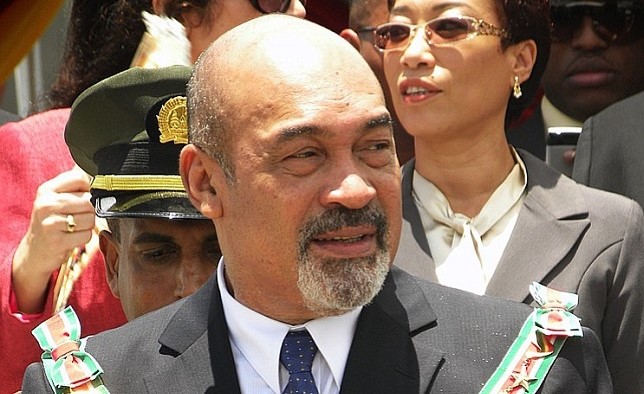Suriname and Norway have submitted their 2020 Nationally Determined Contributions (NDCs) to the UNFCCC Secretariat. The two countries follow Marshall Islands, which in 2018 became the first country to submit its second NDC.

The 2015 Paris Agreement on climate change establishes five-year cycles to increase ambition, including through NDCs that would grow more ambitious over time. Countries requested that in 2020, Parties with an NDC time frame up to 2025 communicate new NDCs, and Parties with a time frame up to 2030 communicate or update their NDCs by 2020.
Suriname submitted its second NDC on December 9, 2019. As low-lying coastal country and, like Marshall Islands, a small island developing State (SIDS), Suriname and its population face vulnerability as economic activities are concentrated in the coastal zone. Therefore, Suriname’s NDC includes adaptation elements, including its 2019 National Adaptation Plan (NAP) as part of its climate strategy.
Among its conditional and unconditional mitigation contributions, Suriname’s NDC presents a package of policies and measures with sectoral sub-targets, including enhanced contributions from four of the country’s six emitting sectors: forests, electricity, agriculture, and transport, which together cover an estimated 70% of emissions.
In its NDC submission, Suriname emphasises its efforts to protect its natural resource and forests serving the global community as a biodiversity hotspot and a carbon sink. As a high forest cover and low deforestation (HFLD) country, Suriname commits to maintaining 93% forest cover.
Considering Suriname’s domestic circumstances and capabilities, the maintenance of the carbon stock and the sectoral emission reductions are undertaken based on equity, conditional on the availability of finance, and in the context of sustainable development, according to the NDC document.
Norway submitted its updated NDC on February 7, 2020, with a target to achieve economy-wide emission reductions of “at least 50% and towards 55% compared to 1990 levels” for the time frame 2021-2030. The target covers all sectors and greenhouse gases (GHGs). This is an ambition enhancement from the country’s original NDC, in which Norway intended a 40% reduction of GHG emissions by 2030 compared to 1990 levels. Norway seeks to fulfill the enhanced ambition through the climate cooperation with the EU and Iceland.
In the event Norway’s enhanced NDC should go beyond the target set in the EU’s updated NDC, Norway intends to use voluntary cooperation under Paris Agreement Article 6 to fulfill the part that goes beyond what is fulfilled through the climate cooperation with the EU. Norway notes that the EU’s current climate framework “does not open for the use of internationally transferred mitigation outcomes” (ITMOs) from outside the EU or the European Economic Area (EEA), emphasising that final accounting towards its NDC target may depend on any further arrangements in Norway’s cooperation with the EU and Iceland.
Norway further informs that it will have specific legislation for the period 2021-2030 covering emissions from all sectors and all GHGs. About half of Norwegian GHG emissions are covered by the EU’s Emissions Trading System (EU ETS), which regulates emissions from industrial plants, power plants, the petroleum industry, and commercial aviation within the EEA. Not covered by the EU ETS are emissions from industry, petroleum, and the transport, agriculture, buildings, and waste management sectors.
These are regulated under the Effort Sharing Regulations, which set binding national targets. Norway’s national target is to reduce emissions in the non-ETS-sectors by 40% in 2030 compared to 2005. The target can be fulfilled through domestic emission reductions and/or using flexible mechanisms within the EU framework. Regarding the Land Use, Land-Use Change and Forestry (LULUCF) Regulation, Norway’s commitment is to ensure that emissions do not exceed removals in this sector.
Norway considers the NDC “fair and ambitious” as it is in line with the emissions pathways towards 2050 and onwards that correspond to keeping global warming in line with the long-term goal of the Paris Agreement: limiting the increase in the global average temperature to “well below 2°C,” and pursuing efforts to limit the temperature increase to 1.5°C, above preindustrial levels. Norway references the fifth Assessment Report (AR5) by the Intergovernmental Panel on Climate Change (IPCC) and the Panel’s special report revealing pathways towards limiting global warming to 1.5°C.
Since the entry into force of the Paris Agreement in 2016, a number of world leaders, including during the 2019 UN Secretary-General’s Climate Action Summit, said they would submit new or updated NDCs by the first quarter of 2020. The UN Development Programme (UNDP), with partners, issued a supporting guidance for this process of developing new or updated NDCs, which it generally treats as “NDC enhancement.” According to the World Resources Institute (WRI) 2020 NDC tracker, 41 countries undertook to “update,” and 68 countries indicated they would “enhance” their NDCs.
By Beate Antonich, Thematic Expert for Climate Change and Sustainable Energy (Germany), SDG Knowledge Hub
